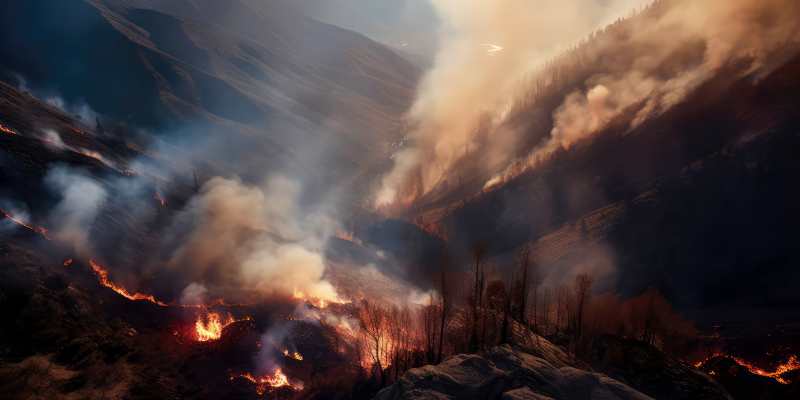
One of the biggest topics of conversation dominating news coverage and the internet in recent weeks and months has been the impact of Canadian wildfires on air quality and the environment in the northeastern U.S. and beyond.
Many states have issued air quality alerts due to unhealthy smoke and decreased visibility, and individuals who are immunocompromised or suffer from respiratory disorders have often been advised to stay inside as much as possible. Similar effects from wildfires and other natural disasters have long affected the health and safety of many Americans in other regions as well, including California, where over 2 million homes are at risk of wildfire damage.
In light of the many recent events around wildfires, it’s critical that everyone — from providers to patients and people everywhere — is informed about the impact wildfires have on airway health, and how to manage and monitor airway health during this time.
Understanding air quality
Many people have questions about wildfire smoke and air quality, and how a wildfire in western Canada can impact people’s breathing and respiratory symptoms in Ohio and Pennsylvania. Wildfire smoke often travels to local and regional population centers, affecting the surface-level air quality and worsening exposure to air pollutants, and complicating the formation of pollutants like ozone and secondary organic aerosols (SOAs).
Wildfires release large amounts of carbon dioxide, black carbon, brown carbon and ozone precursors into the atmosphere, and the direct emission of these toxic pollutants affects air quality for first responders and residents, even those in regions located far away from the fires.
The U.S. Environmental Protection Agency (EPA) introduced the Air Quality Index (AQI) to measure air pollutants in a given region. Higher AQIs, with darker colors and numbers ranging from 0 to 500, indicate greater health concerns. When the AQI is 201 and higher, everyone – not just those with respiratory conditions – should be conscious of airway effects and limit their time outside as much as possible.
Wildfire smoke and health effects
Doctors are still learning more every day about the connection between smoke exposure and short and long-term respiratory health effects, but there are a few key findings that clarify the risks smoke poses for airway health, and the symptoms and complications they cause.
Fine particles in smoke are respiratory irritants, and exposure to high concentrations of irritants can trigger persistent coughing, phlegm, wheezing and difficulty breathing. Even in healthy people without respiratory conditions, being exposed to fine particles can sometimes result in reduced lung function and pulmonary inflammation. More recent research has revealed that relatively low levels of air pollution can impact the lungs and heart, especially for those with asthma, chronic obstructive pulmonary disease, or cardiac disease.
Pollution can also impact the body’s ability to eliminate inhaled foreign objects, like viruses and bacteria, from the lungs.
While air pollution is bad for everyone affected, certain demographics — including people with heart or lung disease, older adults, infants, children and pregnant women — are more sensitive to it than others.
Symptoms to watch out for
Inhaling smoke can affect individuals right away, resulting in a host of uncomfortable and dangerous symptoms. Some common exposure symptoms to look out for include:
- Coughing
- Trouble breathing
- Wheezing
- Asthma attacks
- Stinging eyes
- Scratchy throat
- Headaches
- Tiredness
- Chest pain
- Fast heartbeat
- Runny nose
- Irritated sinuses
Preparing for wildfires
It can be hard to predict the severity and effects of wildfires before they occur, but there are several steps first responders and individuals can take to be in the safest position possible, if and when they do occur. Check the EPA’s website regularly to remain up to date on wildfire smoke and associated airway symptoms, the locations of fires throughout the country and which regions and demographics are most susceptible to fires and smoke and resulting airway complications.














